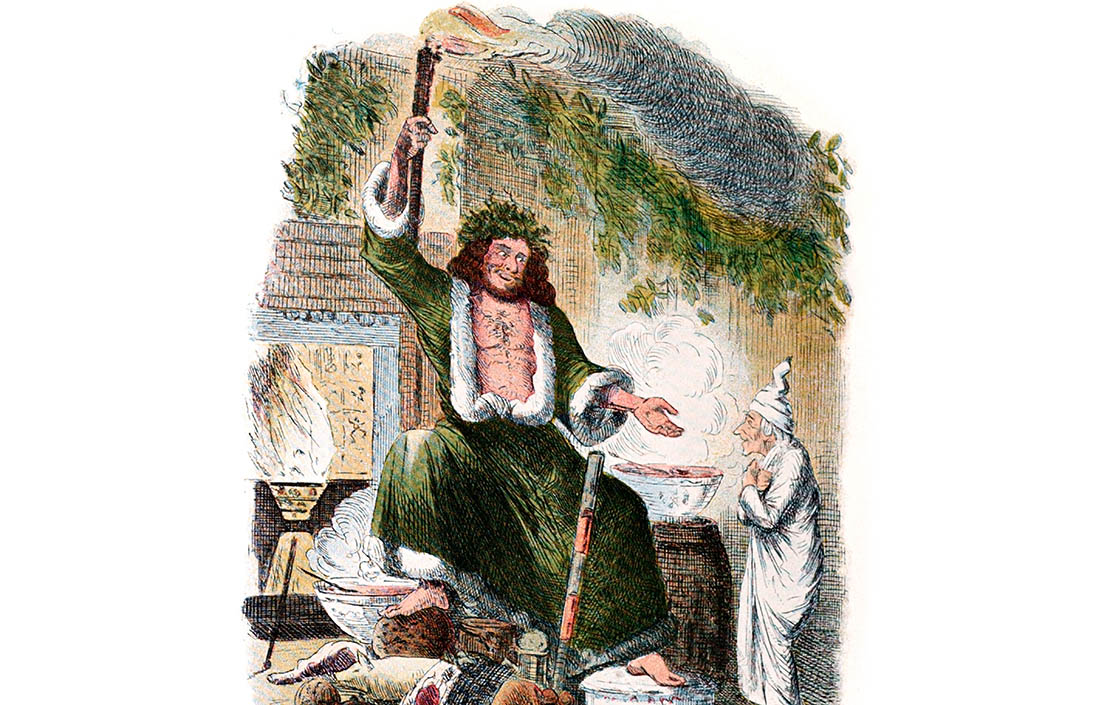Curious Questions: Why do we say 'Merry Christmas' instead of 'Happy Christmas'?
Have you ever stopped to wonder why we say 'Merry Christmas' when for every other occasion we use the word 'happy' instead'? Probably not, but now we've pointed it out the reason will bug you until you've read the answer.


Merry Christmas! Blithely do we use this phrase as greeting, farewell or exclamation of joy with little thought to the book that made it famous. Although it was in use from the 16th century, it was Charles Dickens’s A Christmas Carol –published exactly 175 years ago – that really popularised it.
By the same token, ‘Bah! Humbug!’ entered popular usage, and everyone knows what it means to be called a Scrooge (even if they’ve never read the book) – a miserly grouch who believes that ‘Every idiot who goes about with “Merry Christmas” on his lips, should be boiled with his own pudding, and buried with a stake of holly through his heart’. He is pictured below with the jovial Ghost of Christmas Present.
Published on December 19, 1843, with the first edition sold out by Christmas Eve, the didactic novella’s legacy further extends to an almost immediate rise in charitable giving, recorded in The Gentleman’s Magazine in 1844: for years afterwards, Maud of Wales, Queen of Norway, sent gifts to London’s crippled children signed ‘With Tiny Tim’s Love’.
At the time, Dickens was gravely concerned with the growing masses of poor, hungry and uneducated, particularly children. Six months after the book’s publication, the Factories Act decreed that children between the ages of nine and 13 could work only nine hours a day, six days a week maximum, which was considered humane. We tend to think of Dickens as balding, bearded and avuncular, but when he wrote A Christmas Carol he was young, energetic and crusading – shown by a recently-unearthed portrait of the writer that was painted in 1843.

Given Dickens’s charitable leanings, the book was bizarrely extravagant in its first edition (which he funded himself), in ‘brown-salmon fine-ribbed cloth, blocked in blind and gold on front; in gold on the spine… all edges gilt’, costing 5s.
Even so, since 1943, it has never been out of print, it’s the most adapted of all Dickens’s works and still embodies the spirit of Christmas goodwill for many. God bless us, every one!
A Christmas Carol’s denouement – with Tim fetching a turkey from the butcher – is just one example of the pivotal role of food in Dickens’s stories. Those associations are being explored at the moment in a new exhibition at the Charles Dickens Museum, London WC1, ‘Food Glorious Food: Dinner with Dickens’, which also looks at food with respect to how it represented the author’s sense of social justice,. Upon entering the house, visitors are invited to experience the exhibition as either a servant or a guest – see www.dickensmuseum.com for more details.
Exquisite houses, the beauty of Nature, and how to get the most from your life, straight to your inbox.

Credit: Alamy
Six audiobooks for Christmas, from Dickens to the latest Booker Prize winner
For book lovers who never get the time to read, audiobooks can make a great present. We've picked out five

Credit: http://thestarandgarterlondon.co.uk
The Richmond landmark overlooking Britain's only listed view to open its doors
One of Richmond's most recognisable landmarks has been converted into plush apartments. Eleanor Doughty reports on The Star and Garter.

The best places in Britain to go and hear Christmas choir services over the festive period
Katy Birchall takes a look at the Festival of Nine Lessons and Carols at King’s College, Cambridge, and picks out
Annunciata is director of contemporary art gallery TIN MAN ART and an award-winning journalist specialising in art, culture and property. Previously, she was Country Life’s News & Property Editor. Before that, she worked at The Sunday Times Travel Magazine, researched for a historical biographer and co-founded a literary, art and music festival in Oxfordshire. Lancashire-born, she lives in Hampshire with a husband, two daughters and a mischievous pug.
